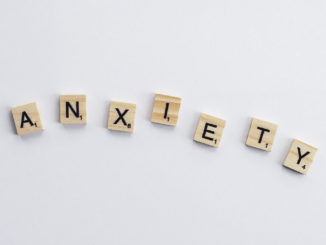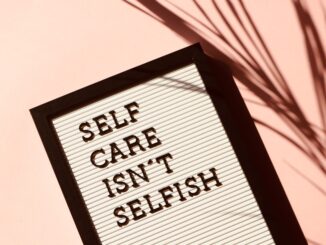By: Wayne Head, LCSW
As a mental health counselor for a school district, I have seen many variations of anxiety. A young girl, who was told that she lived through a tornado when she was an infant, would get upset if clouds were in the sky. She would constantly check the windows to see what the clouds were doing, wondering if we were going to get a tornado that day. I have known people who would forgo travelling for concern of what might happen on the trip, or while they were gone. My own mother was a champion worrier, once asking me “but you have to worry don’t you?” Well we actually have options.
The American Psychological Association defines anxiety as “an emotion characterized by feelings of tension, worried thoughts, and physical changes like increased blood pressure. People with anxiety disorders have recurring intrusive thoughts or concerns. They may avoid certain situations out of worry.” The APA notes that this definition is adapted from the Encyclopedia of Psychology. The young storm worrier had recurring intrusive thoughts and concerns. She would study predictions of the day’s weather by meteorologists, check the sky several times an hour for changes in the clouds, and constantly talk about the day’s possible weather. She was anxious about weather daily. I also worked with an adult male who had an equally adverse reaction to clouds and what they might portend. He would get his wife to drive the car if they were headed into clouds or an active storm. He was a very capable and tough man, but he would become anxious and afraid when the clouds would gather and the wind would blow.
Sometimes medical doctors prescribe medications for anxiety but do not offer or emphasize the need for talk therapy. We teach relaxation and calming techniques (don’t forget to breath) with no other guidance, and when this approach does not stop or tame the anxiety the client begins to believe that this concern is bigger than ever, that nothing can contain this problem. I am not saying that medication and self-calming are not useful. I am saying that we need to change our view of this emotion.
In working with children regarding anxiety, I begin with Rational Emotive Behavioral Therapy (REBT). This strategy teaches that we can control our thoughts, our thoughts create our emotions, and our emotions drive our actions, or consequences. One exercise to present this dynamic is to think that a bag beneath our chair contains a snake. This thought may create fear, which may cause us to vacate the premises as quickly as possible. If instead, we think that the bag contains a million dollars this creates excitement, and we grab up the bag to find a bank. We have the same stimulus, an unknown bag, with different thoughts regarding the bag and different reactions in our bodies and our actions. REBT talks about irrational beliefs and awfulizing thoughts. Awfulizing thoughts magnify the situation. They turn a sound in the night into a big hairy monster who has not eaten in a month. I teach children to challenge their irrational beliefs, (i.e., there are monsters in my room, and their awfulizing thoughts; i.e., the monster is hungry, and it will eat me). They do this challenging by asking themselves, “how do I know this is true,” “what is my proof,” and “what is the worst thing about this thought?”
Next, I teach Narrative Therapy, which externalizes our internalized beliefs about our emotions being horrible and without control and identifies the problem as being an integral definition of who we are as people. We externalize the problem by learning the tricks of our emotions, how these emotions stay in our lives and influence our lives. We look at physiological reactions to the emotion, sweating hands, cold hands and feet, increased heartbeat, rapid and shallow breathing, tension in our muscle groups, and so on. Then we start talking about tricking the tricks of emotion, calming ourselves, questioning the irrational belief and awfulizing thoughts, and even laughing at anxiety. Anxiety takes the natural excitement reaction that we have to our thoughts and the events we are experiencing and makes it seem mysterious. Think of this, when we are on a roller coaster our heartrate increases, our breathing becomes rapid and shallow, our muscles tighten, adrenaline gets into our blood system, and we feel a hollow sensation in our stomachs. So, when we feel these same excitement reactions to our anxious thoughts, anxiety tells us we are going to die, that we are out of control, and we may be having a heart attack. We can reverse these anxious reactions to excitement by challenging our thoughts, reversing the excitement by using self-calming techniques, and realizing what anxiety is doing in the moment. We learn to laugh at anxiety’s attempt to trick us in the moment and tell ourselves “we can handle this,” “I’ve got this,” and “I am pushing away the tricks of anxiety.” It helps to name the anxiety. For the weather over-conscious girl, we named it storm worry. It sounds a lot better than ANXIETY, or fear.
I introduce several self-calming techniques, the active progressive relaxation, which involves tightening and loosening muscle groups in our body, and diaphragmatic breathing that gives us a deeper more calming breath than that which comes from the chest. I also talk about guided imagery, going to a safe place or event, like walking on a beach.
Lastly, I teach the students the difference between worry that they can do something about and the anxiety that just nags at them. If you leave a water hose running and go into the house to get a soda and three distractions later, you wonder if you left the hose running, you can fix this anxious thought by going out to check the water hose. If you are wondering if your friend is going to get through surgery safely you can say a prayer, keep a good thought, or tell yourself “I do not have enough information to entertain this thought right now.” You tell yourself that you will address the thought when you have more information. For this type of anxious thought, I teach them a thought stopping strategy. I talk to them about the uses of a shield like Wonder Woman’s shield or shields in the days of knights. These uses are to protect you, to stop arrows, knives, swords and spears from hitting you. I then teach them to put a worry shield in their mind to bounce away the arrows of anxiety thoughts. Then we practice this use of the worry shield for the rest of our session.
Two necessary notes before I finish this discussion on anxiety or worry. If you are experiencing strong anxiety or anxiety attacks, please find a mental health counselor to help you with these concerns. Lastly, none of the above is to say that we should not have anxious thoughts at times in our lives. If you hear a tornado siren, entertain an anxious thought and get yourself to a safe shelter quickly.



